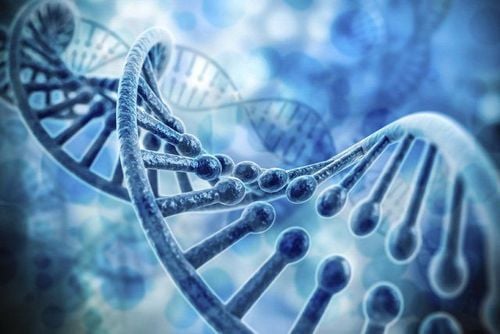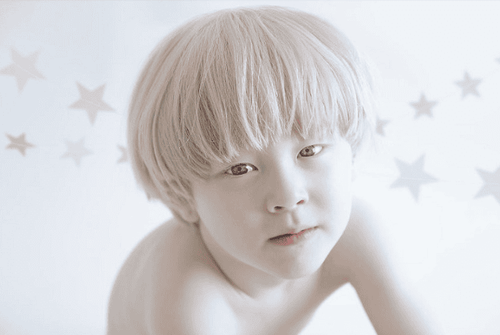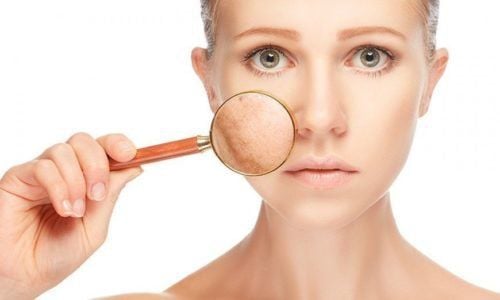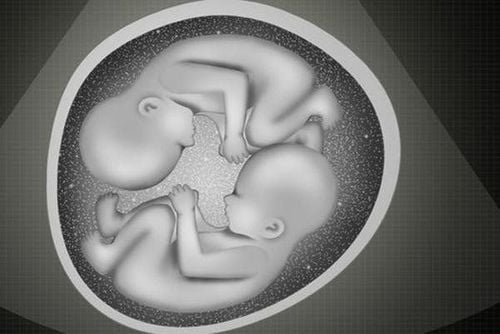This is an automatically translated article.
Albinism occurs in humans and vertebrates. This is one of the congenital diseases caused by the disorder of the biosynthesis of the pigment Melanin, thus making the hair, eyes and skin of the patient pale.1. What is albinism?
Albinism occurs in humans and vertebrates. This is one of the congenital diseases caused by the disorder of the biosynthesis of the pigment Melanin, thus making the hair, eyes and skin of the patient pale. More specifically, the skin of albino people is more susceptible to skin cancer and sunburn. People with albinism also experience visual effects such as photophobia, reduced vision or may have visual disturbances.2. What is the mutation of albinism?
Albinism is a congenital disorder inherited by a homozygous recessive gene. This gene makes the body defective in the enzyme tyrosinase (which is involved in the production of melanin). Melanin is the substance that determines the color of the skin, and is also a substance that helps the body to prevent ultraviolet rays from entering the skin. When there is no melanin, the patient's skin is reduced or completely pigmented, the hair - white hair, the irises also lose color.Albinism is a congenital genetic disorder. Children will be at risk of being born with albinism if their parents have albinism or their parents carry the gene for albinism.
If one of the two people is a parent carrying a recessive pathological gene of the father, grandfather... then the external signs of albinism do not appear - the child's skin color and hair are still normal (ie externally seen. does not know that the person has latent albinism) but carries a recessive pathological gene. If both parents, though normal in appearance, carry the recessive albino gene, their child will be born homozygous for the recessive gene, thus exhibiting albinism. The recessive albino genes persist in the family from generation to generation, if they get married or get married without recessive albinism, the offspring will not be born with albinism but carry the recessive gene. physical. On the contrary, if you marry a husband or wife who also has recessive albino genes, then pairs of similar pathological recessive genes meet to easily produce albino children. Therefore, if this couple continues to have children, the rate of children born with albinism is high.

Bạch tạng là một rối loạn di truyền bẩm sinh
3. Signs to recognize albinism
Skin signs: Most people with albinism have pink skin and white hair. Some people with albinism still have a white to brown skin color. Skin pigmentation in people with albinism is lighter in color than in normal people.People with albinism have increased levels of melanin pigment over time from childhood to adulthood. Visible signs on the patient's skin such as:
Freckles spots Darkening of the skin due to an increased amount of melanin pigment Appearance of many moles, dark brown moles and pink-red moles Skin easily tans Eye color : The eye color of people with albinism is usually from green to brown, in addition, it can change with age. In particular, the lack of pigment will cause the eyes to fade, thus making the patient's eyes sensitive and vulnerable.
Signs of recognition in hair: the hair color of people with albinism will be from white to brown. As you age, your hair color may darken.
Signs of vision recognition: signs and symptoms to recognize albinism related to eye functions such as:
Children often suffer from nearsightedness or farsightedness early; nystagmus; Loss of ability to look in one direction or move in the same direction; Astigmatism causing blurred vision; If the child shows the above signs, parents should take the child to a reputable center or hospital to be examined by a doctor and given appropriate treatment for the child.

Rối loạn chức năng của mắt là một trong những triệu chứng nhận biết bạch tạng
4. Treatment for albinism
Currently, there is no cure for albinism, the main treatment methods are to alleviate the symptoms of the disease:Wear contact lenses and have regular eye exams as prescribed by the ophthalmologists. In some cases, doctors will prescribe eye surgery to reduce nystagmus and strabismus, and improve vision. Re-examination of the skin condition every year is to let the doctors assess the extent of damage, especially the risk of skin cancer. Adult patients with albinism should have regular eye and skin exams as scheduled by their doctor. In particular, cases of albinism with Hermansky-Pudlak and Chediak-Higashi syndromes need regular care by medical professionals to avoid unwanted complications later on.
Please dial HOTLINE for more information or register for an appointment HERE. Download MyVinmec app to make appointments faster and to manage your bookings easily.













